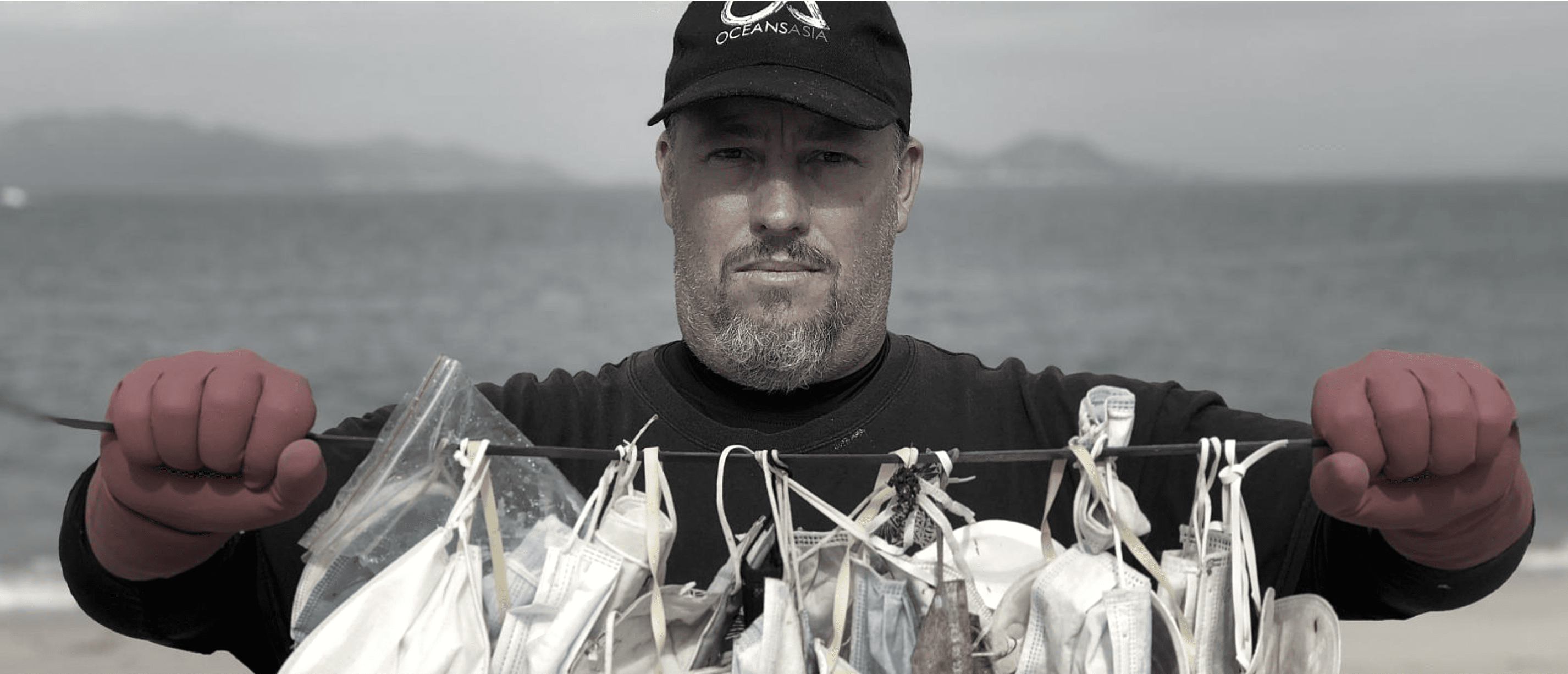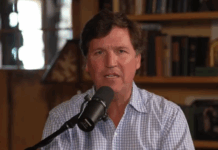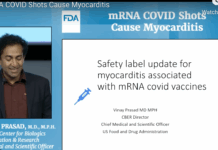From 0ff-guardian.com:
t seems like only yesterday that a massive campaign against single-use plastic straws was trending. The much forgotten anti-straw trend was based on astronomical numbers; a suggested 500 million straws used each day in the US alone, with more than half a billion plastic straws being consumed and discarded, every day around the entire globe.
An estimated 8.3 billion plastic straws had come to pollute the planet’s beautiful beaches. The backlash against the straws appeared to be drive by the horrific impacts on the marine environment in particular.
Personal protective equipment (PPE) in 2020, in particular face masks, have become a new genre of pollution. The majority of face masks being purchase and disposed of are single-use surgical masks made of melt-blown fabric manufactured from polypropylene, a type of thermoplastic. The vast majority of all disposable face masks being consumed have two outer layers with a filter between them (polypropylene), made from nonwoven plastic fibres.
The paper COVID-19 Pandemic Repercussions on the Use and Management of Plastics published June 20, 2020 warns that a “monthly estimated use of 129 billion face masks and 65 billion gloves globally, is resulting in widespread environmental contamination.”
194 billion face masks and gloves equates to well over 6 billion face masks being consumed and discarded each and every day.
Based on the aforementioned paper, six months of face masks alone – equates to seven hundred seventy-four billion, while 12 months of consumption, equates to a stunning one trillion five hundred forty-eight billion face masks.
Meanwhile, “Canada alone has ordered more than 153 million N95 respirators, almost 400 million surgical masks and 18 million non-medical face masks. That doesn’t include demand from the private sector.” As a new emerging market, trees (biological communities invisible to the humancentric eye) cannot only be sacrificed on the altar of “green energy”, we can also pulverize them into face “ecofriendly” masks.
What happened to all those who cared about our environmental crises? That of climate change, biodiversity and ocean pollution?
Microplastics & Human Health
Microplastics are tiny plastic fragments less than 5 millimeters in diameter, or about 0.2 inches. They are barely visible to the human eye.
A 2019 study showed that human microplastic consumption ranges from 39,000 to 52,000 particles per day. These estimates increase to 74,000 and 121,000 when inhalation is considered. This amounts to humans ingesting approx. 5 grams of plastic each and every week, 5 grams being the equivalent of a credit card or a US nickel. Earlier in 2019, the European commission’s chief scientific advisers stated:
The evidence [on both environmental and health risks due to microplastics] provides grounds for genuine concern and for precaution to be exercised.”
More recently, on August 17, 2020, researchers analyzed 47 human tissue samples. Traces of microplastics were found in all 47 samples.
We have detected these chemicals of plastics in every single organ that we have investigated.”
senior researcher Rolf Halden, director of the Arizona State University (ASU) Biodesign Center for Environmental Health Engineering
This begs the question, what will be the result from applying microplastic materials, that is face masks, directly and securely over our air passages?
“Flock” is defined as inhaled microfibers of the plastic. “Flock worker’s lung” is an occupational lung disease caused by exposure to flock in manufacturing processes. People who work in flocking manufacturing processes inhale small pieces of the flock fibers, placing them at risk of interstitial lung disease.
Workers exposed to polypropylene flocking particles have developed flock worker’s lung. The presence of microplastics in human lung tissue was outlined by in a 1998 science paper, following the research of lung tissue belonging to cancer patients who had prolonged exposure to plastic fibers.
In addition to particle pollution causing damage to lung tissue and reducing lung capacity, it worsens other respiratory health issues such as asthma. In 2013, the International Agency for Research on Cancer, an institution belonging to the World Health Organization, concluded that particle pollution causes lung cancer.
An informal survey of a small group of health care workers by myself found that about 50% of workers noted that their masks began to fray at the end of their shift, noting fibers that itched their face and nose.”
[source]
In occupational flock, “the cutting process results in formation of airborne particles or fibers in the respirable range.” . As facemasks undergo a continuous friction with breathing, talking, and facial movements, it seems likely, if not probable, that microscopic polypropylene microfibers, in some amount, are effectively being ingested into both the body and lungs.
Particles that are not inhaled into the lungs (the vast majority) make their way into our waterways. To be more succinct, every single particle produced, that does not make its way into our bodies, will instead go in to our waterways. The particles are then ingested into the body by humans and non-human life (marine animals and fish), some of which is too, ingested by humans. Of course, in addition, we drink the water, as does non-human life.
…Is this how we protect biodiversity? Is this what we mean by protecting health?
Cloth Masks
To mitigate against this latest environmental and health nightmare, people have been encouraged to wear reusable fabric face coverings comprised of three layers of fabric.
On September 25, 2020, a University of California–Davis study found that the fabric of home-made cloth face coverings release a large amount of fibers into the air. The study underscored the importance of washing them. What is not discussed are the same fibres being inhaled and ingested.
Those in the West, and those who own or have access to a clothes dryer, will know what dryer lint is. Friction causes the fabric fibres to become loose and dislodge during the washing and drying process – resulting in sometimes little, and more often lots – of lint that must be removed after each cycle.
Consider this excerpt from the article, How damaging is breathing in microplastics? [emphasis added]:
Microplastics washed off from synthetic clothes contribute up to 35% of the plastic particles polluting our oceans. Every time we do our laundry, an average of 9 million microfibers end up in the wastewater treatment plants that cannot filter them, and because of that, these fibers end up in the ocean. Also, just by wearing synthetic clothes, plastic fibers are constantly being released in the air.
Up until now, all research was focused on microfiber pollution through laundry washing. However, a recent study shows how wearing polyester clothes pollutes the environment to a similar extent—wearing polyester clothes releases as many microplastic fibers in the air as through washing.
If microfibers are shedding off clothing, they are shedding off masks. Even cotton ones. In fact, cotton textiles (clothing, towels, etc.) often produce far more lint than other fabrics. Add to this, the inhalation of chemical laundry detergent and chemical fabric “softener” (liquid and sheet form) that many people continue to use in the process of washing and drying the masks.
It is safe to assume that those wearing masks for long periods of time are most at risk. The vast majority of this group would be minimum wage workers, who have no choice but to comply, people of colour, who are told they are more susceptible to the virus than white populations, and children in schools, where masks have been made mandatory.
Our Children
In June 2020, the Children’s Sick Kids Hospital, perhaps the most prestigious hospital in Canada, advised that children, by and large almost completely unaffected by the virus, should not wear masks and added that physical interaction and play was essential for their well-being.
We have suggested that masks not be required when children return to school.”
Michelle Science MD, MSc, FRCPC, Division of Infectious Diseases, The Hospital for Sick Children, Assistant Professor, Department of Paediatrics, University of Toronto
Close interaction such as playing and socializing is really central to child development and should not be discouraged…Overall we think it’s not realistic or in children’s best interests to completely avoid all close interaction and play.”
Dr Daphne Korczak, Pediatrics, Psychiatry
For children and adolescents, masks are an absolute no-no. Children and adolescents have an extremely active and adaptive immune system and they need a constant interaction with the microbiome of the Earth. Their brain is also incredibly active, as it is has so much to learn. The child’s brain, or the youth’s brain, is thirsting for oxygen. The more metabolically active the organ is, the more oxygen it requires. In children and adolescents every organ is metabolically active.”
Dr. Margarite Griesz-Brisson MD, PhD , Consultant Neurologist and Neurophysiologist [full transcript]
These recommendations were largely ignored by the media and, despite the warnings, the government and school boards made masks and social distancing mandatory for children.
The hospital further reported that 1500 asymptomatic children were tested, none tested positive [see this Twitter thread.]
In the following presentation, Professor Franz Ruppert explains the impact of the pandemic from a psychological point of view. Ruppert explains how and why people currently suffer when their essential needs are taken; why children in particular are extremely affected; how current “protective” measures achieve this effect; and whether these measures are justified. In relation to how masks affect children, and toddlers in particular, Rupert draws out attention to the “still face experiment”:
Disclaimer: We at Prepare for Change (PFC) bring you information that is not offered by the mainstream news, and therefore may seem controversial. The opinions, views, statements, and/or information we present are not necessarily promoted, endorsed, espoused, or agreed to by Prepare for Change, its leadership Council, members, those who work with PFC, or those who read its content. However, they are hopefully provocative. Please use discernment! Use logical thinking, your own intuition and your own connection with Source, Spirit and Natural Laws to help you determine what is true and what is not. By sharing information and seeding dialogue, it is our goal to raise consciousness and awareness of higher truths to free us from enslavement of the matrix in this material realm.
 EN
EN FR
FR



























I have a hard time reading articles at this site because the left margin prevents me from seeing two or three characters at the beginning of each line – yea I can still read it but it sure is bothersome.